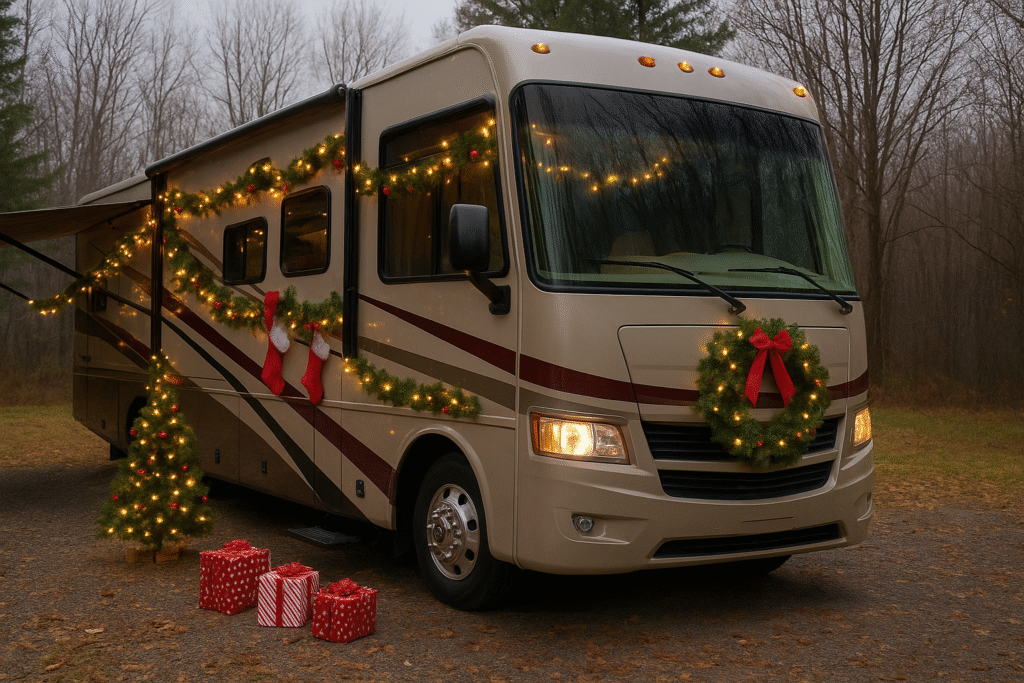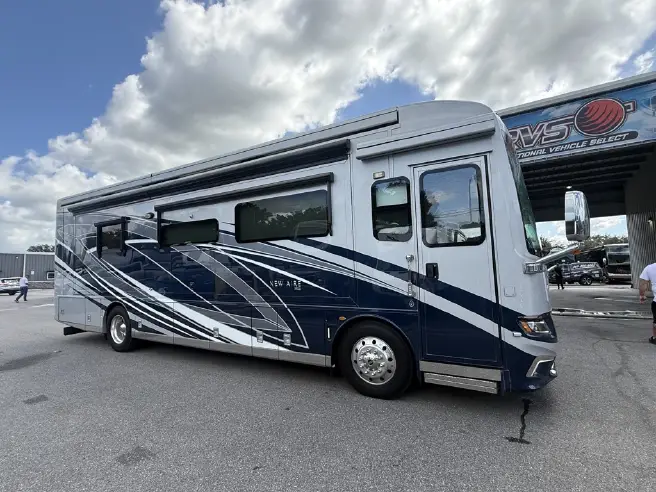Spring is in the air! Come March and April, the snow starts to melt and many RV enthusiasts are already getting ready to pull their rigs out of hibernation and get back on the open road. But returning to the joys of RV traveling isn’t as easy as pulling your vehicle out of storage and taking off. After several months of not being driven and possibly being exposed to the cold temperatures of winter, your RV will likely need a little TLC to make sure it’s fit for traveling.
- Check for exterior leaks – Before you put your RV into storage for the winter, you likely gave it a once over to make sure that any leaks around openings like doors and windows were sealed. Unfortunately, moisture and cold temperatures can cause caulking to erode and new leaks to form, so inspect all doors, windows, vents, and the seal around the roof to ensure they’re airtight. You definitely don’t want the rains of spring leaking into your rig and potentially causing costly water damage.
- Test your generator – Before heading out on your first spring camping trip, it’s always a good idea to make sure your generator is in working order. Start by priming the generator to get fuel into the lines. Once the generator is running (this could take a while since it hasn’t been in use for several months) check both the oil level and the air filter.
- Check your liquid propane (LP) – Practice extreme caution when checking your LP. Ensure that all appliances using propane are turned off and that there are not flames, sparks or smoke anywhere in the vicinity of your vehicle. Once you have made certain that the LP leak detector inside the vehicle is turned on, you can open all valves and check for blockages or leaks. Finally, check your LP gas levels to make sure they are sufficient.
- Check your appliances – Doing a thorough function test and cleaning of all your appliances is a great way to start the RV season. During the winter, it’s possible that small animals, insects, or other debris got into your appliances or the exterior access covers. Caution: only turn on appliances and check them once you have made certain that your LP is safely functioning.
- Evaluate your tire pressure – After months of being stationary in cold temperatures, your tire pressure may have decreased significantly. Fill tires according to the tire pressure recommendation found in your owner’s manual. If you didn’t place a tire block between your tires and the ground when you were winterizing your RV (always a good idea), the frozen ground may have caused tire damage so be sure to check for cracks. Finally, take care to secure all lug nuts tightly.
- Check batteries – Battery corrosion is a common result of storing your RV for months at a time in the elements. Prior to checking batteries, put on protective eye wear and latex gloves to protect yourself from any leaking battery fluid. Turn off all power sources to the RV before checking batteries for electrolyte levels. Clean batteries, if necessary, with hot water and baking soda. While disassembled, it is also a good idea to take your battery to a professional to have it tested before setting off on your spring travel season. Before reassembling, treat your battery with an anti-corrosive product.
Any questions? Feel free to contact us!




